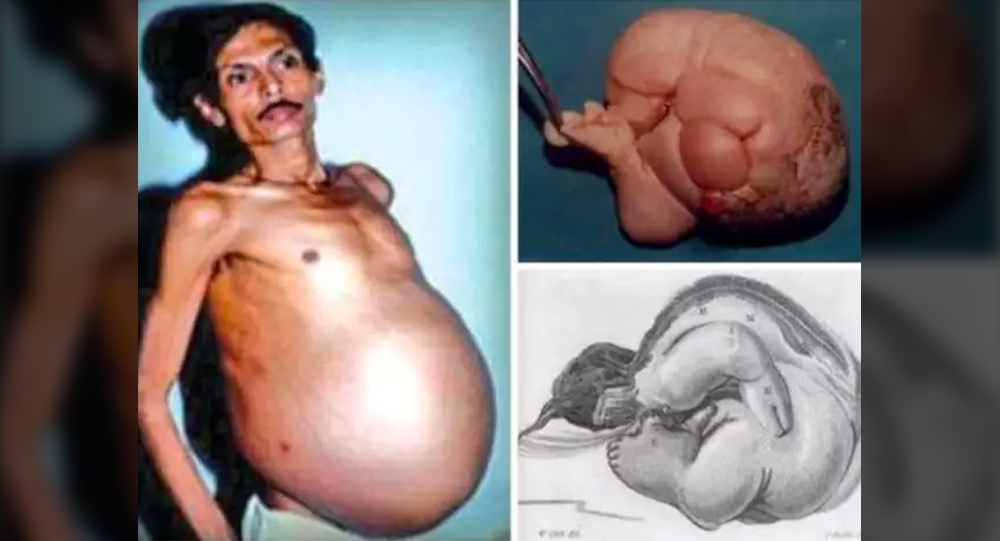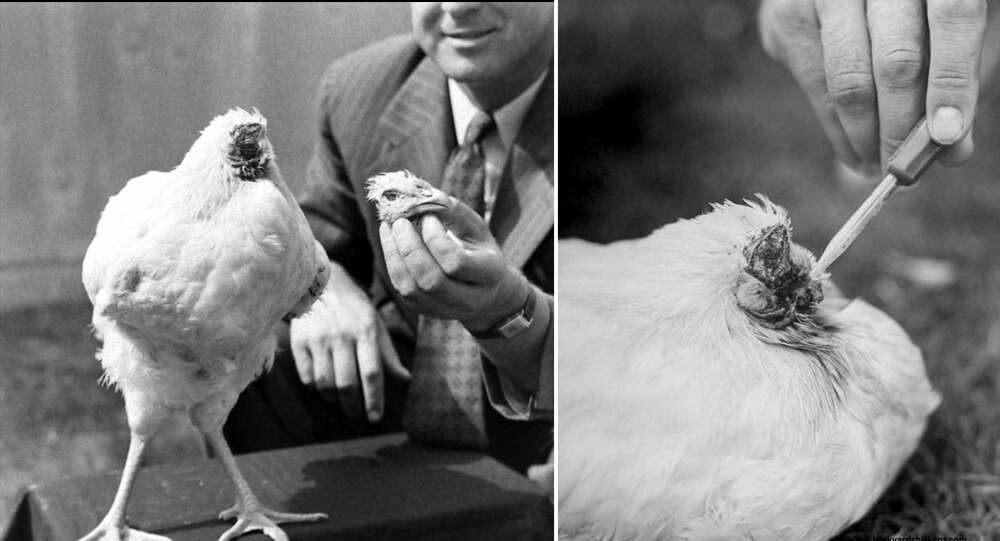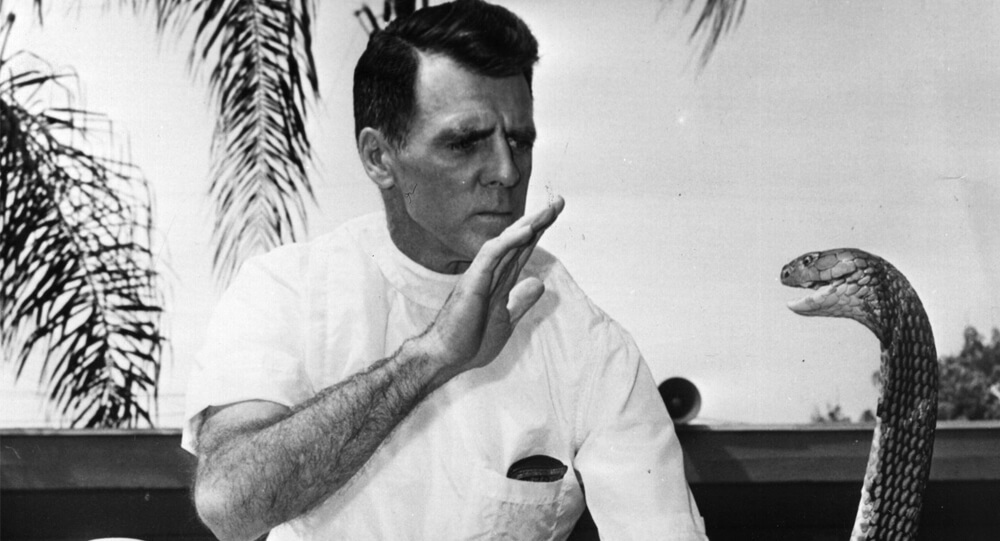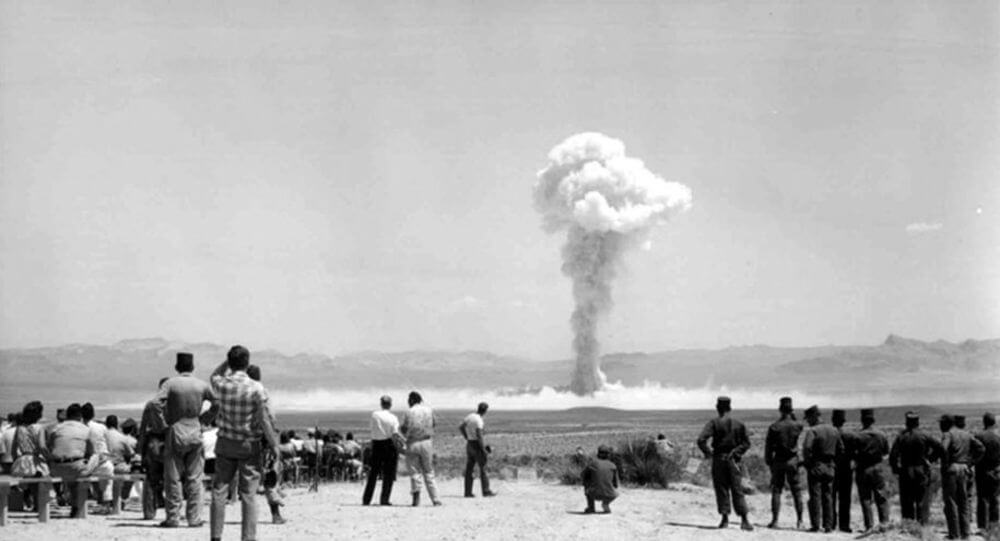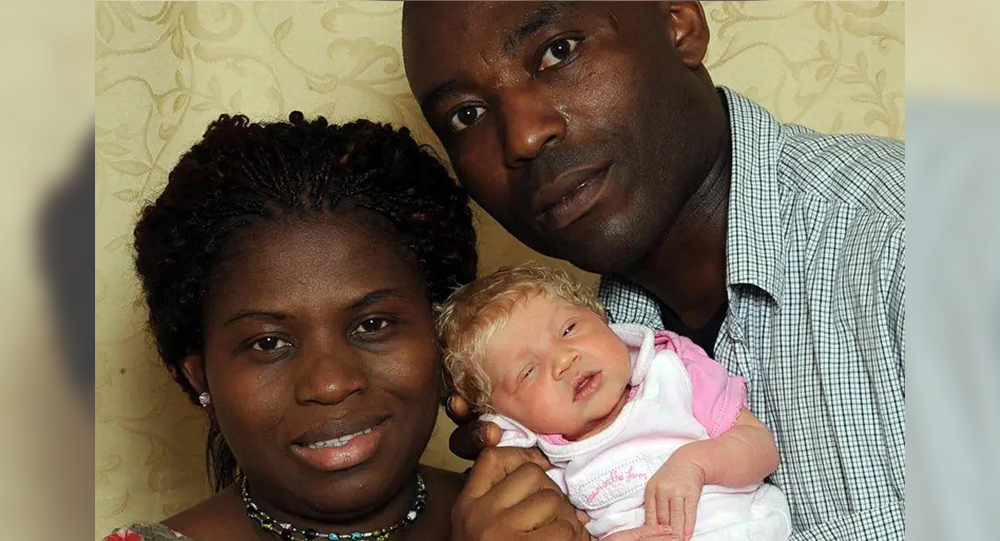
In a remarkable and heartwarming story that has captured the attention of people worldwide, a black Nigerian couple living in the United Kingdom welcomed a baby girl with strikingly unexpected features: blonde hair, blue eyes, and fair skin. Dubbed the “miracle baby” by her family and the media, this infant’s appearance defies common genetic expectations and has sparked curiosity, fascination, and important conversations about genetics, race, and human diversity.
This article delves into the extraordinary story of this family, the science behind such a rare genetic occurrence, and the broader implications for how we understand heredity and identity.
The Story of the Miracle Baby
The Nigerian couple, both with dark skin and African features, were overjoyed when their daughter was born with pale skin, bright blue eyes, and blonde hair. Her appearance was so unexpected that it initially surprised both the parents and healthcare professionals. The baby’s unique features stood in stark contrast to those of her parents and extended family, leading to her affectionate nickname, the “miracle baby.”
The parents have shared their story publicly to celebrate their daughter’s uniqueness and to raise awareness about the complexities of genetics. They emphasize that their daughter is healthy and loved unconditionally, and they hope her story encourages acceptance and understanding of genetic diversity.
How Is This Possible? The Genetics Behind the Miracle
At first glance, a black Nigerian couple having a white, blonde, blue-eyed child might seem impossible. However, the science of genetics reveals that such occurrences, while rare, are entirely plausible.
Recessive Genes and Genetic Variation
Human traits such as hair color, eye color, and skin pigmentation are influenced by multiple genes. Some of these genes are dominant, while others are recessive. Blonde hair and blue eyes are typically recessive traits, meaning that both parents must carry the gene variants for these traits to be expressed in their child.
Even if both parents have dark hair and eyes, they can carry recessive genes for lighter features inherited from distant ancestors. When both parents pass these recessive genes to their child, the child can express these lighter traits.
Genetic Diversity Within African Populations
Africa is the most genetically diverse continent on Earth, with a wide range of genetic variations among its populations. Over millennia, populations have mixed and migrated, resulting in a rich tapestry of genetic traits.
It is possible that the couple’s ancestry includes genetic variants for lighter pigmentation, even if these traits are not visible in the parents themselves. This genetic diversity means that rare combinations can occasionally produce unexpected physical features.
Albinism vs. Natural Variation
While albinism-a genetic condition causing reduced pigmentation-is a known cause of pale skin and light eyes, the couple’s baby does not have albinism. Her pigmentation is natural and healthy, making her case even more unique and fascinating.
Similar Cases Around the World
Though rare, cases of children born with unexpected pigmentation traits to darker-skinned parents have been documented globally:
- In 2017, a South African couple made headlines when they welcomed a blonde-haired, blue-eyed baby, sparking similar discussions about genetics and diversity.
- Other reports from African, Asian, and Latin American countries have documented children with light features born to darker-skinned parents, highlighting the complexity of human genetics.
These cases remind us that human appearance is not always predictable and that genetic diversity can surprise us in beautiful ways.
The Family’s Experience and Public Reaction
The Nigerian couple has embraced their daughter’s unique appearance with pride and joy. They have spoken openly about their happiness and the curiosity their child’s looks have generated.
While some people have expressed surprise or asked questions, the family emphasizes that their daughter is loved unconditionally and that her health and happiness are what matter most. Their openness has helped dispel myths and misconceptions, promoting a message of acceptance and understanding.
The story has resonated with many around the world, inspiring conversations about race, genetics, and identity. It challenges stereotypes and encourages a broader appreciation of human diversity.
The Broader Implications: Rethinking Race and Appearance
This story goes beyond a single family; it challenges common assumptions about race, genetics, and identity. Often, people associate certain physical traits exclusively with specific racial or ethnic groups. However, the “miracle baby” reminds us that:
- Race Is a Social Construct: While race has biological components, it is largely a social and cultural classification. Physical appearance does not always neatly align with racial categories.
- Genetics Are Complex: Human genetics involve many interacting factors, and traits can skip generations or appear unexpectedly.
- Diversity Exists Within Groups: African populations, in particular, have immense genetic diversity, including variations in skin tone, hair texture, and eye color.
- Acceptance Matters: Celebrating genetic uniqueness fosters inclusivity and combats stereotypes.
Fun Facts and Trivia About Human Genetics and Appearance
- Blue Eyes and Genetics: Blue eyes are caused by a mutation in the OCA2 gene, which affects melanin production in the iris. This mutation likely originated thousands of years ago near the Black Sea.
- Origins of Blonde Hair: Blonde hair is most common in Northern Europe but has appeared in various populations worldwide due to genetic mutations.
- Skin Pigmentation: Skin color is influenced by multiple genes that regulate melanin production. Variations in these genes can produce a wide range of skin tones even within families.
- Recessive Genes: People can carry recessive genes for traits they do not visibly express, meaning their children can inherit unexpected features.
- Albinism vs. Natural Variation: Albinism is a genetic condition causing lack of pigment, but natural light pigmentation can occur without any health issues.
What This Story Teaches Us
The birth of a white, blonde, blue-eyed baby to a black Nigerian couple living in the UK is a powerful example of genetic diversity and the wonders of human biology. It challenges preconceived notions about race and appearance, reminding us that genetics can surprise us in beautiful and unexpected ways.
This story encourages us to embrace diversity, question stereotypes, and celebrate the unique traits that make each person special. As science continues to uncover the complexities of our genes, stories like this inspire curiosity, understanding, and a deeper appreciation for the rich tapestry of humanity.
Conclusion
The “miracle baby” born to a Nigerian couple in the UK is more than a rare genetic occurrence; it is a symbol of the complexity and beauty of human diversity. Her story invites us to rethink our assumptions about race and heredity and to celebrate the incredible variations that make each individual unique.
As genetic research advances and our understanding of human biology deepens, stories like this will become more common, reminding us that beneath our skin, we share a common humanity enriched by the extraordinary diversity of our genes.

San Pedro prison in La Paz, Bolivia: community inside prison
Bolivia’s largest prison has a society within itself and no guards inside the walls. Inmates elect their own leaders, make their own laws, get jobs to pay for their cell’s rent, and can even live with their families.

The true story of Josephine Myrtle Corbin, the lady born with four legs and two private parts
Josephine Myrtle Corbin, an American sideshow performer born in 1868, had a rare condition known as dipygus, which caused her to have four legs, each smaller inner leg paired with one of her outer legs. Corbin joined the sideshow circuit, captivating audiences as the "Four-Legged Girl from Texas."

Why This Belgian Bar Makes You Trade Your Shoe for a Beer
To prevent tourists from stealing their beer glasses, some bars in Belgium require people to hand over one of their shoes as a deposit which is then put in a basket and hung from the ceiling. These shoe baskets have also become an attraction.

The Astonishing Case of Sanju Bhagat: Living with a Twin Inside Him for 36 Years
Sanju Bhagat, an Indian farmer, lived with an undiagnosed parasitic twin inside his abdomen for 36 years. In 1999, doctors discovered the twin during surgery. This rare condition, fetus in fetu, occurs when a malformed twin is absorbed during pregnancy, surviving within the host sibling's body.

Nevada’s Fly Geyser Is A Surreal Wonder That Looks Like Its On Another Planet
In 1964, an energy company accidentally created Nevada’s Fly Geyser after drilling into a geothermal pocket. Since then, the geyser has been releasing algae-filled scalding water five feet in the air, depositing minerals and forming a cone that sports vibrant hues of green and red.

The story of The chicken that lived for 18 months without a head
Mike the Headless Chicken was a rooster whose head was accidentally chopped off but miraculously survived. This is due to most of the brain stem being left intact. He was fed using a special tube that delivered food directly into his esophagus. Despite his lack of a head, he lived for 18 months, gaining worldwide fame before ultimately choking on a kernel of corn during one of his tours, in a Motel in Fruita, Colorado.

Chocolate Rain in Switzerland: How a Factory Malfunction Turned Olten Into a Sweet Spectacle
In 2020, chocolate 'rained' from the sky in a town in Switzerland. This incident was caused by a ventilation system malfunction at a chocolate factory in Olten. Strong winds then carried the snow-like cocoa powder and spread it around in the immediate vicinity of the factory, covering cars and other things in chocolate.

The story of Bill Haast, who lived to be 100 despite his extensive snake venom injections
Bill Haast immunized himself by injecting snake venom into his blood for several years. He holds the Guinness World Record for surviving the most lethal snake bites, having been bitten over 172 times. Bill became known as "Snake Man" around the world and lived for over 100 years.

Upside-Down Fig Tree From The Roof Of An Ancient Ruin in Italy
There is an upside-down fig tree in Bacoli, Italy. No one is quite sure how the fig tree ended up there or how it survived, but year after year, it continues to grow downwards and bear figs.

Pierre Brassau: The chimpanzee painter who deceived the avant-garde world
Abstract paintings by a previously unknown artist “Pierre Brassau” were exhibited at a gallery in Sweden, earning praise for his “powerful brushstrokes” and the “delicacy of a ballet dancer”. None knew that Pierre Brassau was actually a 4 year old chimp from the local zoo.

A man who has been suffering from headaches for nearly six months discovers chopsticks lodged in his brain
When it was discovered that a Vietnamese man with headaches and vision problems had chopsticks lodged in his brain, the doctors were almost as surprised as the man himself.

The 1814 London beer flood
In 1814, there was a beer flood in London when a tank containing more than 300,000 gallons ruptured in which 8 people drowned.

Jack the Baboon operated a railroad, earned a living, and never made a mistake
A baboon worked as a signalman for the railroad in the late 1800s. He never made a mistake and worked for the railroad until the day he died.

A one-eyed Vancouver fish receives a fake eye so that other fish will not bully him
A fish whose eye was removed due to cataract was bullied by other fish at the Vancouver Aquarium. So the vets fitted the fish with a prosthetic eye to fool the other fishes.

Frank Lentini, The Three-Legged Sideshow Performer
Francesco Lentini was a man with three legs, four feet, sixteen toes, and two sets of functional male genitals. He worked for the circus and lived to be 78 years old.

The Real-Life Sleeping Beauty: A Girl with Hypersomnia Syndrome
An Indonesian 17-year old teenager Siti Raisa Miranda or Echa, has a rare medical condition formally called Kleine-Levin syndrome (KLS) where she can sleep for days and weeks without being woken up. Echa was only 13 when she first slept for a week. She’s now 17, and her parents still need to feed her and change her clothes when she experiences the deep levels of grogginess.

The Bizarre (And Magical) Duel Between Chung Ling Soo And Ching Ling Foo
Ching Ling Foo and Chung Ling Soo were two magicians from the early 20th century who were bitter rivals. While Ching Ling Foo was genuinely Chinese, Chung Ling Soo was actually a New Yorker named William Robinson.

Recipient of suicide victim's heart kills himself 12 years later
In 1995, Sonny Graham received a transplanted heart from a suicide victim. He then committed suicide in the very same manner as the donor.

The “Walking” Palm, tree species can walk up to 65 feet each
This tree species can walk up to 65 feet each year to find the best habitat to live in.

Khuk Khi Kai: Thailand’s Infamous “Chicken Poop Prison” and Its Gruesome Legacy
Thailand used to have a prison called "Khuk Khi Kai," or "Chicken poop prison." The first floor of the prison contained prisoners, and the second floor was a large chicken coop. The grated floor ensured that prisoners were constantly subjected to chicken poop.

Vakil Batirshin’s Story: How Radiation Exposure Caused Severe Lymph Node Swelling
This is Vakil Batirshin, a man whose severe swelling from enlarged lymph nodes was reportedly caused by radioactive exposure. His condition highlights the devastating and long-term health effects radiation can inflict on the human body—often surfacing years after initial contact. Cases like his underscore the importance of nuclear safety and medical support.

Atomic Tourism: In the 1950s, nuclear tests in Las Vegas served as a draw for tourists
Between 1950 and 1960, Las Vegas offered “Atomic Tourism” in which guests could watch atomic bombs being tested in the desert as a form of entertainment.

June and Jennifer Gibbons The silent twin who Only Spoke to Each Other
Identical twins June and Jennifer Gibbons were born on 11 April 1963 at a military hospital in Aden, Yemen where their father worked as part of the Royal Air Force.

Mystery SOLVED: blood Rain in India
The dissemination of spores of microalgae has been identified as the origin of the 'Blood Rain' phenomena, according to a new study by Indian and Austrian experts. Since 1896, reports of intermittent red-colored rain in portions of Kerala and Sri Lanka have been coming in. The most recent one occurred in 2013 over Kerala.

The mystery of India's 'lake of skeletons'
In 1942, a British forest guard in India made an alarming discovery. Some 16,000 feet above sea level, at the bottom of a small valley, was a frozen lake absolutely full of skeletons.




